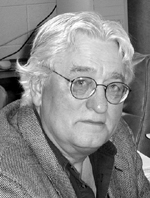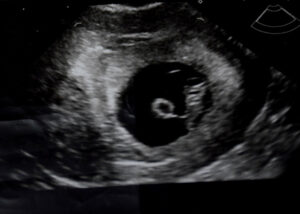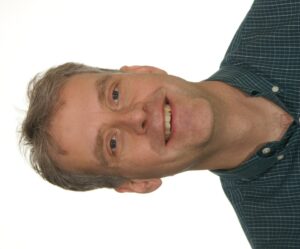Introduction
I have chosen two texts to illustrate my sermon, which are not part of today’s lectionary selections: the conversion of Paul described in Acts 9 (vs. 10-19), and the healing of the man born blind in John 9 (vs. 1-12). In the first, we read of Saul travelling to Damascus, being struck down blind by a light from heaven and addressed by the risen Jesus, whose followers Saul has been persecuting.
The narrator observes that the men travelling with Saul “stand speechless, hearing a voice but seeing no one.” When Saul rises his eyes are opened but he sees nothing, he has to be led by hand to Damascus. We find Ananias told in a vision to meet Saul at the house of Judas where Saul is praying. Ananias goes and lays his hands on Saul, upon which immediately something like scales fall from Saul’s eyes and he regains his sight.”
From this time on he is a changed man, now called Paul, becoming the most ardent advocate of Christianity especially to Gentiles. We are prone, when reading this account of Saul’s conversion, to focus on the personal change in Saul, from a man killing people to one saving Gentiles. I would like for you today to think of it from a slightly different angle: focusing not so much on Saul’s personal change but on his illumination, his coming to see, scales falling from his eyes.
In the second text, John 9, we meet a man born blind from birth. Here the issue for the disciples is the cause of the blindness: who has sinned: this man or his parents? Jesus rejects this kind of speculation altogether and moves the discussion to another plane: the blindness and subsequent healing have nothing to do with the man himself, but with God’s works becoming manifest through him.
Jesus had said something similar to Ananias about Saul’s blindness and healing: Saul, he said, had been chosen to be an instrument of God’s spreading the gospel to the Gentiles. In the case of the man born blind the cure is spittle mixed with clay applied to his eyes. He is told to wash in the pool of Siloam, which according to the narrator means “being sent.” We moderns are so prone to reduce everything that happens to us to personal, subjective reasons and feelings, and we think of conversion in this way as well. The lesson Jesus is teaching us in each of these two cases is that blindness and healing really have little to do with us personally: there is something much larger going on in the world: the question is whether we will allow ourselves to be used as instruments in the fulfilling of divine purposes beyond our own.
Conversion
In this light, I suggest that conversion is a form of illumination, scales falling from the eyes, a coming to see a larger reality operating in the world and in the cosmos, a reality within which we play but a small part. Conversion was a concept very much alive in the family and community within which I grew up during my vulnerable, adolescent years. We were taught that conversion was a dramatic, emotional experience, a radical change of direction, a turning around of our lives from ones of sin and damnation to lives of virtue and eternal life. It was in the early 1960s, in a course at Canadian Mennonite Bible College, that I was introduced to another view of conversion.
We were asked to read a book by 19th century liberal thinker Horace Bushnell. I ended up writing a paper on him. Bushnell thought of conversion not as sudden but as gradual and developmental. In my own life the change-of-direction metaphor for conversion had been of little value. I had been “saved” too often. So the notion that conversion was a prolonged process which transforms one’s world in intensely personal ways, affecting all levels of human existence, was appealing to me. Conversion came to mean an “opening up” rather than a “turning around,” a “widening” rather than a “narrowing,” a removing of the blinkers and saying yes rather than no to the world out there.
In what follows I want to think of conversion as an “opening up” rather than a “closing down,” but I do so with some apprehension. There are radical conversions! Life is not a slow upward track. The liberal continuity and progressive improvement in the gradualist view are not altogether true to religious experience. There are failures, discontinuities, interruptions, conflicts, set-backs, reversals, backslidings, on the one hand, and momentous forgivenesses, breath-taking miracles, religious and psychological lightning-strokes, on the other.
Bushnell cannot give good reasons for the people leaving one tradition for another, the conversion from being a Mennonite to being a Roman Catholic, for instance. Nevertheless, I find the images of lifting the veil, coming to see, falling away of scales more satisfying metaphors for conversion than those that emphasize a narrowing, blocking off, and closing in upon oneself. In what follows I want to think about four ways in which conversion as coming to see has occurred to me: religious, moral, intellectual, and psychological conversion.
Religious conversion
The great 19th century American thinker, William James, in his book Varieties of Religious Experience made a scientific study of dramatic religious experiences such as conversion without passing negative value judgments on them. However, he tended to psychologize them and to reduce religion to psychology. While the element of psychology in religious experiences, and conversion as a form of therapeutic healing cannot be denied, religion cannot be reduced to emotional and physical phenomena. In my childhood and youth I was “obsessed” with religious rebirth and the assurance of salvation.
My public declarations of commitment to Christ left me dissatisfied, ashamed, wounded and filled with doubt and angst. My daughter, Christina, in an essay on Freud, Jung and Reimer, makes the following apt comment: “It has been intriguing to watch A. James Reimer dedicate his life to the systematization of what, for him, started as an experientially based, emotional, and charismatic phenomenon with his family in the village of Altona in southern Manitoba. Theology, he once told me, provides him with a way of transforming and making sense of something that has been at times personally threatening and overwhelming . . .”
Christina rightly observes that there was in my early religious experience a “Christian tendency to diminish the self before the greatness of God, a tendency usually accompanied by feelings of unworthiness and guilt.” It was, in short, bad and unhealthy religion.
And yet, this early experience of the fearful and awesome mystery of God, in Rudolf Otto’s sense of mysterium tremendum (awesome mystery), has been the foundation stone of my ongoing spiritual-psychological, moral and intellectual life. While I have come to understand God more benevolently as I have matured, I have never abandoned the subjective, personal, and existential dimensions of Christian faith, what I like to call the verticality of life. I continue to find Pietism, with roots in German Lutheranism and British Methodism, and some parts of North American Evangelicalism compelling despite their frequent right-wing ethics and politics. This is also why I value the great tradition of dramatic conversions from Paul to Augustine, Luther, Wesley, Menno Simons and Billy Graham.
However, the evangelical obsession of the self with subjective experience can easily lead to spiritual narcissism. Genuine religious conversion is the opposite of self preoccupation, it is being gripped by that which is truly beyond us. In the words of Augustine, it is God finding us rather than we finding God. In Paul Tillich’s words, “faith is being grasped by Ultimate Concern [his phrase for God].”
True conversion occurs when we begin looking away from ourselves to that which is beyond ourselves, beyond our own sinfulness, beyond our own salvation. The turn of many contemporary Christians, including Mennonites, to liturgical renewal and a more sacramental view of reality reflects the move away from evangelical “me-ism”. Liturgy allows one to participate in the expression of the universal words of the Christian tradition without making personal experience and commitment the litmus test of everything. My religious conversion has been a long process of allowing the scales to fall off my eyes and learning to see, opening myself up to other Christian traditions and faiths – to the world outside my own little Low-German fortress.
Moral conversion
Sigmund Freud divided the self into the ego (the “I” at the heart of any healthy, decision-making self), the super-ego (the paternal voice of authority that always hovers over one’s ego in the form of conscience), and the Id (our instinctual and sexual drives). An old Catholic professor friend once described me as having the strongest super-ego that he had met. My therapist once said I had a strong ego as well, so that makes me feel better. I have spent my life trying to weaken my super-ego, strengthen my ego, and controlling my libido.
Immanuel Kant, in his famous essay, “What is the Enlightenment?,” says Enlightenment is to dare to think for oneself (Sapere Aude he calls it). Throw off your shackles, use your own reason, free yourself from all forms of tutelage! That was his message. This is an apt ideal for a certain phase in our moral development from adolescence to adulthood, but inadequate for the authentic, mature moral life as a whole. My old friend claims that we now have too many bratty egos running around with no super-egos.
I have been helped in my thinking about moral conversion once again by Paul Tillich. He divides childhood, adolescence and adulthood into three forms of morality: heteronomy, autonomy and theonomy. Heteronomy (literally translated into “external law”) is the intellectual and moral stance of an immature child, for whom obedience to some higher, external law (the Freudian “father” figure, the super-ego) is the primary norm. Immature Christianity is one in which God is conceived of as an external father-figure who demands obedience and deference to laws entirely external to oneself.
It is this pre-modern heteronomous view of the world that the 18th century Enlightenment overthrew, as did Kant with his dictum: “think for yourself.” There was a time in my life and studies when I was greatly enamoured by Kant’s Sapare Aude. I was all for exchanging autonomy for heteronomy. Autonomy (literally “self-law”) defines the adolescent stage of the individual as well of the modern age. It is the throwing off of external authorities – prince, bible, religion, and pope—in favour of private, personal experience, one’s own inner law. In the modern period all areas of human activity – the sciences, politics, economics, arts and the humanities – are autonomous, not accountable to some transcendent source. Tillich is critical of what he calls this modern “self-sufficient” finitude.
Tillich proposes a third possibility: the Theonomous view. While autonomy is a necessary development beyond heteronomy in individual and collective life, theonomy goes further in combining heteronomy and autonomy in a creative new way. It understands that God is the ground of our own existence; what appear to be external laws are really the basis of our own existence. It is like the son growing up and re-considering the rules of his father as being in fact for his own good.
Moral conversion for me was to grow up to understand that I had choices to make which were not merely based on my own desires and wishes (autonomy), nor were they simply blind obedience to my father or super-ego (heteronomy), but they were based on universal laws transcending both father and me, and the basis of both of our existences. Theononomy is the context in which freedom, morality and ethics becomes significant for mature healthy persons.. Ethics for its own sake, even the imperative to “love the neighbour, or the enemy” are meaningless if they are not rooted in something beyond ourselves as the basis for our beliefs and actions.
While Tillich was very important in my moral conversion, there was something missing, which I found present in two other theologians in the Nazi period: Karl Barth and Dietrich Bonhoeffer. Both, unlike Tillich, had a strong sense of the church as a moral Christian community. The church has always been a vital force in my life both professionally and personally, and for this reason I have been drawn to Barth and Bonhoeffer.
I began teaching courses on Bonhoeffer in Toronto, and plan to co-lead a Bonhoeffer study tour to Germany this May. Bonhoeffer believes the church is Christ existing – the church is not only the body of Christ, it is actually Christ existing historically as community. For Bonhoeffer the church is where we as a Christian community live on behalf others: we vicariously take on other’s sins, sufferings and redemption.
Intellectual conversion
Conversion also has for me a strongly intellectual component. I think theology is faith seeking understanding, and that includes everybody interested. I went through a keen liberal phase in my thinking in the 1960s, illustrated by my accepting the role of superintendent of the Sunday school class at Charleswood Mennonite Church in Winnipeg. The first thing we did was throw out all the old Sunday school curriculum, tore down the walls of partition between classrooms and introduced finger-painting, creative music-making, and drama, with weekly staff meetings to dream up the most novel ideas for each Sunday.
The old was out and the new was in. That was our motto. It coincided with a number of other things in my life: the folk group “Faith and Life Singers,” my studying history and philosophy at the University of Manitoba, and later theology at the bastion of American liberalism, Union Theological Seminary in New York City. But then something happened.
In the mid-1970s I met and began reading the Canadian philosopher George P. Grant with a group of students and it changed my life. Reading Grant in the mid-1970s was a breath of fresh air; it brought about an intellectual conversion in my thinking from being a run-of-the-mill liberal to a being a small “c” conservative, which meant for me having a new appreciation for the long-standing catholic/classical tradition. Old was no longer necessarily bad and novelty no longer necessarily good.
I won’t bore you with the consequence of this seismic shift in my intellectual worldview. I will only say that I began professionally teaching and writing articles criticizing some of the ways Mennonites had been doing theology, and suggesting that we take more seriously liturgy, sacrament and particularly the Trinity along with our peace position. I was severely attacked for my newfound version of catholic Mennonitism – even John H. Yoder himself told me I was trying to catholicize the Mennonite church. I won’t go into the details of these debates, which I have done in other contexts. What I will say is that the scales of my intellectual eyes have fallen off and opened me up to the universality of God’s truth and to the realization that we as individuals and as Mennonite community play rather modest parts in the total scheme of things. The Mennonite – Muslim dialogue in which in which I have been engaged for the past decade has probably done the most for me in this regard.
Psychological conversion
Expressing this final form of conversion gives me the most difficulty. I’m not quite happy with the word “psychological” for what I want to say here. Words like psychic or mystical might be more adequate. As you have already gathered I was a very anxious, self-conscious, guilt-ridden, psychological-mixed-up kid, which I attribute at least partially to “bad or unhealthy religion.”
Healing came only gradually by learning about my self through the help of psychotherapy and medication, through a growing understanding of “sound religion,” experiencing the intimacies of human love and having children, gaining self-confidence intellectually and professionally. More recently conversion has come through learning to “let go” of earthly things in the face of terminal illness. Psychological healing and conversion, like all the other conversions, is an endless process, and I hope will never end, not even at death.
I have no set ideas of what will happen after death. I do imagine that my life will continue in some form after death maybe as dream life: there is so much more to learn about oneself, others, the world, God, so many new ideas to think. Actually, I think every day when we experience moments of transcendence in this life – the love and forgiveness of a child, examples of truth, fidelity, and beauty – we already have intimations of that other dimension into which we step at the point of death.
I remember John E. Toews, former president of Conrad Grebel University College, told me that his father, a significant leader in the Mennonite Brethren Church, on his deathbed kept saying he was looking forward to being translated. I love this notion of the final conversion as translation.
My niece recently drew my attention to a meditation by poet and preacher John Donne (Devotion XVII, 1624) on exactly this point. I conclude by letting the poet speak: “All mankinde is of one Author, and is one volume; when one Man dies, one chapter is not torne out of the booke, but translated into a better language; and every chapter must be so translated; God emploies several translaters; some peeces are translated by age, some by sicknesse, some by warre, some by justice; but Gods hand is in every translation; and his hand shall bind up all our scattered leaves againe, for that Librarie where every booke shall lie open to one another.”
————————————————————————————————————–
A. James (Jim) Reimer died on August 28, 2010, just two days after the final concert of his beloved blue grass gospel quartet, Five on the Floor. The concert epitomized Reimer’s love for God, music and the church – it was a fundraiser for the Toronto Mennonite Theological Centre, which Reimer was instrumental in founding in 1991. He served as director of this Centre, which prepares theological leaders for the church in an ecumenical context, particularly at the doctoral level.
One of Reimer’s major theological projects was to explore Mennonite theology within the theology of the larger Christian church. In a tribute to Reimer at his funeral, Tom Yoder Neufeld noted that Reimer’s deep faith in God’s grace and love made it possible for him to dialogue with others. That dialogue took him to Yugoslavia in the 1970s and 80s, and made him a central participant in the Shi’a Muslim–Mennonite Christian dialogue of the past ten years.
Born in Altona, Manitoba, he grew up in the Bergthaler Mennonite Church, now part of Mennonite Church Canada. He married Margaret Loewen in 1968 and they have three children: Christina, Thomas and Micah. His education took him to Canadian Mennonite Bible College and the University of Manitoba. He spent a year at Union Theological Seminary in New York and completed his graduate degrees at the University of Toronto. He began teaching at Conrad Grebel College in 1978 and retired in 2008. That year the University of Waterloo honoured himwith the title “Distinguished Professor Emeritus.”
–Dave Rogalsky, Canadian Mennonite correspondent for eastern Canada








Leave a Reply
You must be logged in to post a comment.